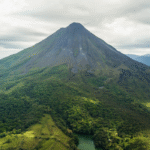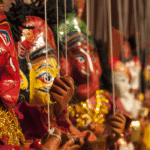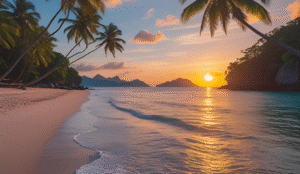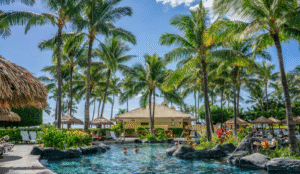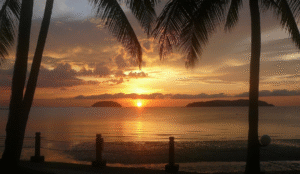7 Best Waterfalls for Hiking in Nature in Malaysia: You Must Visit at Least Once
Malaysia’s lush rainforests, ancient mountains, and winding trails make it a dream destination for adventurers and nature lovers alike. If you crave hiking in nature in Malaysia, there’s no better way to embrace its wilderness than by trekking to its spectacular waterfalls. These majestic cascades, hidden in tropical jungles or nestled near rural villages, are not just photogenic wonders—they’re soothing spots for a rejuvenating escape from the chaos of modern life.
Whether you’re an experienced hiker or a weekend explorer, this guide will take you through the top seven must-visit waterfalls in Malaysia that deserve a spot on your adventure bucket list.
Frequently Asked Questions (FAQ)
1. What is the biggest waterfall in Malaysia?
The tallest and arguably most majestic waterfall in Malaysia is Lata Kinjang in Perak. With a staggering drop of approximately 260 meters, it’s visible from the North-South Expressway and is popular among those exploring hiking in nature in Malaysia. The multi-tiered cascade offers both scenic beauty and a thrilling climb for adventurous hikers.
2. What is the most challenging hike in Malaysia?
While many waterfall trails are beginner-friendly, some hikes stand out for their intensity. Gunung Tahan, the highest mountain in Peninsular Malaysia, is often considered the most challenging hike due to its long duration (up to 7 days), steep terrain, and unpredictable weather. However, for waterfall lovers, Jerangkang Falls in Pahang can also be tough due to its remote location and rugged jungle trail—ideal for seasoned adventurers into hiking in nature in Malaysia.
3. What time of year is best to visit Malaysia?
The best time for hiking in nature in Malaysia is during the dry season, from March to September. During this period, you’ll enjoy clearer skies, manageable river crossings, and safer trails. Avoid hiking during the monsoon season (October to February), when heavy rain can lead to slippery paths and flash floods.
4. Do you need a guide for hiking?
For beginner-friendly trails like Kanching or Jeram Toi, you can usually hike independently. However, if you’re planning to visit more remote or technical locations—like Jerangkang Falls, Chiling Waterfall, or even mountains like Gunung Tahan—hiring a guide is strongly recommended. A local guide ensures safety, offers cultural insights, and enhances your experience of hiking in nature in Malaysia.
5. What are the beginner mountains in Malaysia?
If you’re new to hiking, Malaysia has several beginner-friendly mountains worth exploring before tackling more serious climbs:
- Bukit Gasing (Selangor) – A short and shaded trail ideal for families.
- Bukit Saga (Ampang) – Offers a mild challenge with scenic views.
- Gunung Datuk (Negeri Sembilan) – Steep but manageable; ends with a rewarding rock scramble.
- Bukit Broga (Selangor) – One of the most popular sunrise hikes for locals.
These spots are perfect for those getting started with hiking in nature in Malaysia and wanting to build stamina and confidence before attempting tougher trails.
1. Seven Wells Waterfall, Langkawi (Telaga Tujuh)
Langkawi isn’t just about beach resorts and duty-free shopping—it’s also home to the mystical Seven Waterfalls Langkawi, known locally as Telaga Tujuh. This legendary site features seven natural pools formed by water streams cascading down Mount Mat Cincang.
The hike to the top involves climbing around 600 steps, offering breathtaking views of the island. Along the way, you’ll pass tropical flora and possibly spot monkeys or hornbills. Though not too strenuous, it’s a good warm-up for beginners or casual travelers exploring hiking in nature in Malaysia.
Why You Should Go:
- Natural slides and pools to swim in.
- Magical atmosphere with ancient folklore.
- Well-maintained trail and nearby cable car station.
Tip: Wear proper hiking shoes—the rocks can be slippery, especially after rain. Also, early morning is the best time to hike to avoid heat and crowds.
2. Lata Kinjang, Perak
If height impresses you, Lata Kinjang should be on your radar. With a drop of over 850 feet (260 meters), it’s one of Malaysia’s tallest waterfalls and offers an exhilarating hiking in nature in Malaysia experience. Located near Tapah, Perak, this waterfall is visible from the North-South Expressway—a visual teaser for road-trippers heading north.
The hiking trail winds through bamboo groves and rainforest terrain. While the first tier is accessible to most, higher levels require more effort and stamina. But the views are worth every step.
Why You Should Go:
- Towering multi-tiered waterfall.
- Less crowded during weekdays.
- Great spot for family picnics and nature photography.
Tip: Just like in a Smoky Mountain waterfall hike, bring insect repellent—leeches and mosquitoes can be active in damp seasons.
3. Chiling Waterfall, Selangor
Often dubbed as one of the most beautiful waterfalls in Peninsular Malaysia, Chiling Waterfall lies within a fish sanctuary near Kuala Kubu Bharu. Getting there is half the fun—it involves crossing rivers multiple times (about six, depending on the season), which makes this a thrilling hiking in nature in Malaysia adventure.
You’ll trek through secondary jungle, hop across stones, and possibly get soaked—so wear quick-drying clothes. Once you arrive, the main waterfall rewards your effort with its powerful rush and cool waters.
Why You Should Go:
- Exciting river-crossing hike.
- Set in a protected fish sanctuary.
- This trail is one of the most exciting spots for hiking in nature in Malaysia, thanks to its river crossings and lush greenery.
Tip: The best time to hike here is between February and September, when water levels are safe and crossings manageable.
4. Tembakah Waterfalls, Terengganu
Located within the Pelagat Forest Reserve, Tembakah Waterfalls is a hidden gem on the East Coast. The area is perfect for hiking in nature in Malaysia, with five cascading tiers to explore and natural pools to swim in. The first few levels are easily accessible, while the higher tiers involve more rugged trekking.
This site is far less touristy, giving it a serene and untouched vibe. Plus, it’s ideal for birdwatchers and campers looking to immerse themselves in the sights and sounds of nature.
Why You Should Go:
- Multi-level waterfalls ideal for swimming and relaxing.
- Peaceful setting with fewer crowds.
- Family-friendly lower trails, adventurous upper paths.
Tip: Plan your trip during the dry season. It’s also a great idea to bring along binoculars if you enjoy birding—similar to how Smoky Mountain waterfall hike enthusiasts spot wildlife.
5. Sungai Pisang Waterfall, Gombak
Just 40 minutes from Kuala Lumpur, Sungai Pisang offers one of the most accessible and picturesque waterfall hikes near the city. The trail includes tunnels, river crossings, and jungle trekking, giving you a mix of urban exploration and wilderness adventure—a unique way to enjoy hiking in nature in Malaysia without venturing too far.
The iconic concrete tunnel at the start of the trail has become a popular Instagram spot, but the real highlight is the gorgeous twin-stream waterfall at the end.
Why You Should Go:
- Easy day trip from KL.
- Trail includes walking through cool tunnels and rivers.
- It’s a perfect starter route for anyone wanting a taste of hiking in nature in Malaysia without long travel hours.
Tip: Start early in the morning—the best time to hike—to enjoy a quieter trail and catch the golden hour through the jungle canopy.
6. Jeram Toi Waterfall, Negeri Sembilan
Often overlooked but full of charm, Jeram Toi is located in the rainforest of Negeri Sembilan, just off the Seremban–Kuala Kelawang road. With its scenic environment and moderate trail, it’s a perfect option for families or anyone wanting a chill day out hiking in nature in Malaysia.
Facilities like gazebos and changing rooms make it more accessible for casual hikers. You’ll find several small pools great for dipping your feet or having a picnic with the sound of cascading water in the background.
Why You Should Go:
- Perfect for a relaxing half-day hike.
- Suitable for kids and seniors.
- Clean and well-maintained with basic amenities.
Tip: Visit on weekdays to avoid the local weekend crowd. As with other hikes, the best time to hike is early morning or late afternoon to avoid the tropical heat.
7. Kubang Gajah Waterfall (Also known as Hutan Lipur Jerangkang), Pahang
For seasoned hikers and nature purists, Kubang Gajah Waterfall—part of the Jerangkang Falls chain in Pahang—is a must-see. Tucked away in the forest reserve near Maran, this site features dozens of cascading waterfalls and pools, spread across different levels.
Getting there involves off-road driving and jungle trekking, which makes the entire experience ideal for those seeking serious hiking in nature in Malaysia.
Why You Should Go:
- Remote and untouched beauty.
- Multiple waterfall tiers for exploring.
- Camping and stargazing opportunities.
Tip: Bring proper gear and a guide if it’s your first time. The best time to hike here is during the dry season (May–August) when the trails are more accessible and safer.
Bonus: Waterfalls Worth Mentioning
Malaysia’s list of waterfalls doesn’t stop at just seven. For the intrepid explorer who can’t get enough of hiking in nature in Malaysia, here are a few bonus destinations that deserve an honourable mention:
Located near Kuantan, Berkelah Falls is a multi-tiered cascade perfect for both hiking and camping. The trail includes lush forest paths and a series of natural pools, culminating in a majestic 50-meter drop. If you love backcountry adventures and hiking in nature in Malaysia, this is a rewarding off-the-beaten-path destination.
Just north of Kuala Lumpur, Kanching Falls offers a more accessible experience for those new to hiking in nature in Malaysia. With seven levels to explore, the initial tiers are ideal for families and picnickers, while higher levels challenge more adventurous hikers.
Often seen as a roadside waterfall, Lata Iskandar is popular with motorists heading to Cameron Highlands. While it’s more of a short trek than a full hike, the surroundings and cool mists make it a great nature stop.
Why Waterfall Hiking Is the Best Way to Connect with Nature in Malaysia
Waterfall hikes provide a full sensory experience—you hear the roar of cascading water, breathe in fresh mountain air, and often, take a refreshing dip at the end of your trek. But why is hiking in nature in Malaysia especially meaningful?
- Tropical Biodiversity
Malaysia is one of the world’s most biodiverse countries. On any waterfall hike, you might encounter pitcher plants, giant ferns, wild orchids, and exotic birds like hornbills or kingfishers. This biodiversity is rarely experienced in urban life, making every hike feel like a nature documentary come to life.
- Cultural Connections
Many Malaysian waterfalls are located near Orang Asli (indigenous) settlements. Some even hold spiritual or mythological significance. For example, the seven waterfalls Langkawi are tied to ancient legends of celestial maidens. You’re not just walking through the jungle—you’re walking through stories passed down for generations.
- Physical and Mental Rejuvenation
Multiple studies have proven that time in nature reduces stress, improves memory, and enhances creativity. Combine that with physical movement and the serenity of flowing water, and you’ve got one of the healthiest forms of recreation.
If you’re looking for a Malaysian version of the peacefulness found during a Smoky Mountain waterfall hike, you’ll definitely find similar serenity—if not more—in the tropical mist of these jungle trails.
Hiking Tips from Local Experts
We spoke to a few local hiking enthusiasts who frequent these waterfall trails. Here’s what they recommend for anyone new to hiking in nature in Malaysia:
Sharifah, 34, from Selangor:
“I always carry two water bottles and a hydration pack, especially for trails like Chiling. The river crossings can be tricky—best to go early. For me, the best time to hike is around 7 AM. You beat the heat and see more wildlife.”
Faizal, 42, from Penang:
“Langkawi’s Telaga Tujuh is not just beautiful but mystical. Locals believe the pools have healing properties. I recommend trying all seven levels of the seven waterfalls Langkawi if you’re up for the challenge.”
Amirah, 28, from Kuala Lumpur:
“A waterproof dry bag is essential. I once dropped my phone while hiking to Jerangkang Falls. Also, always check weather reports—it’s not safe to hike during or just after heavy rain.”
Eco-Responsibility: Leave No Trace
One of the biggest problems Malaysia’s natural spots face is pollution by visitors. As more people explore hiking in nature in Malaysia, it’s critical that we practice eco-hiking habits:
- Bring back all trash—even food waste can harm ecosystems.
- Stick to marked trails to avoid disturbing wildlife habitats.
- Don’t use soap or shampoo in waterfalls—even if it says “natural.”
Supporting local communities, hiring guides, and choosing eco-lodges over commercial resorts also ensures your adventures benefit those who protect these environments.
Best Time to Hike in Malaysia
Unlike the best waterfalls in the Smoky Mountains, where seasons like autumn or spring dominate the hiking calendar, Malaysia has two main weather periods to consider:
- Dry Season (March to September) – This is generally the best time to hike, with clearer skies, safer river crossings, and more accessible trails.
- Monsoon Season (October to February) – Trails may become muddy or flooded, and flash floods are common. It’s best to avoid waterfall hikes during this time unless you’re with an experienced local guide.
Morning hikes are always advisable due to Malaysia’s tropical heat. Start early, wrap up by noon, and reward yourself with a meal at a local warung!
Photography Tips for Waterfall Hikers
Waterfall photography is a must, but Malaysia’s humidity and lighting can make it challenging. Here are a few quick tips to capture the magic:
- Use a tripod or rock surface to stabilize your camera for long-exposure shots.
- Go for slower shutter speed (1/4 to 1/8) to create the silky waterfall effect.
- Avoid noon lighting; instead, hike early morning or late afternoon—the best time to hike and shoot.
- Capturing these moments is part of the joy of hiking in nature in Malaysia, where every trail offers new scenery.
Whether you’re capturing the sweeping view of the seven waterfalls Langkawi or the mossy green charm of Tembakah, your pictures will become priceless mementos of your journey.
Create Your Own Waterfall Hiking Bucket List
If this list inspires you to go deeper into hiking in nature in Malaysia, consider keeping a hiking journal. Track:
- Trails you’ve completed
- Difficulty levels
- Waterfall tiers explored
- Flora/fauna spotted
- Notes on the best time to hike specific trails
Over time, you’ll develop your own connection with Malaysia’s wilderness. Who knows? You might even start planning hikes outside Malaysia—perhaps to explore the best waterfalls in the Smoky Mountains someday!
Wrap-Up: Answer Nature’s Call
Waterfalls are more than tourist attractions. They are breathing spaces for the soul, refreshment for the body, and a call to reconnect with the natural world. When you commit to hiking in nature in Malaysia, you’re not just collecting photos—you’re collecting moments that awaken your spirit.
So pack your essentials, invite a friend, and take that first step into the rainforest. Whether it’s the spiritual echoes of Langkawi’s seven wells, the secretive pools of Jerangkang, or a family picnic at Jeram Toi—there’s a waterfall waiting to meet you.
And always remember—the best time to hike is now.
Comparing Malaysia with Other Waterfall Destinations
Many travelers ask how these Malaysian waterfalls stack up against global favorites like the best waterfalls in the Smoky Mountains. The answer? Malaysia holds its own, offering tropical biodiversity and cultural richness that you won’t find elsewhere.
In places like the Smokies, hikes are often cooler, longer, and accompanied by fall foliage or bear sightings—making a Smoky Mountain waterfall hike distinct. However, Malaysian waterfalls offer tropical magic, with exotic birds, rainforest ambiance, and vibrant local traditions.
So why not experience both in your lifetime?
What to Bring for a Waterfall Hike
- Lightweight, quick-dry clothes
- Non-slip hiking shoes
- Waterproof bag
- Water bottle & snacks
- Insect repellent
- Basic first aid kit
Most importantly, bring your sense of adventure. Hiking in nature in Malaysia is all about embracing unpredictability—sudden rain, wild sounds, or stumbling upon hidden paths you never expected.
Final Tips on Hiking in Malaysia’s Waterfalls
- Respect nature – Leave no trash behind.
- Be safe – Avoid hiking during heavy rain; flash floods are real.
- Check with locals – Some waterfalls may be closed seasonally.
- Join a group – Especially for remote or off-the-grid locations.
- Hydrate and fuel up – It’s humid, and you’ll sweat a lot.
Conclusion
From Langkawi’s legendary seven waterfalls Langkawi to the untouched beauty of Jerangkang Falls, Malaysia offers waterfall hikes for every level of adventurer. Whether you’re craving a quick jungle escape or a multi-day trekking journey, you’ll find solace, thrill, and rejuvenation in hiking in nature in Malaysia.
So, lace up your boots, pack your bag, and answer the call of cascading waters and whispering trees. You don’t need to fly across the world to find beauty—Malaysia’s waterfalls are calling, and you must go.
And who knows, after conquering these seven, maybe you’ll plan your next trip to explore the best waterfalls in the Smoky Mountains or take on a full Smoky Mountain waterfall hike. But for now, let Malaysia’s rainforests be your gateway into a world where nature reigns supreme.
Post you might be interested:
-
 Recipe Nasi Lemak: Step-By-Step/0 Comments
Recipe Nasi Lemak: Step-By-Step/0 Comments -

-


